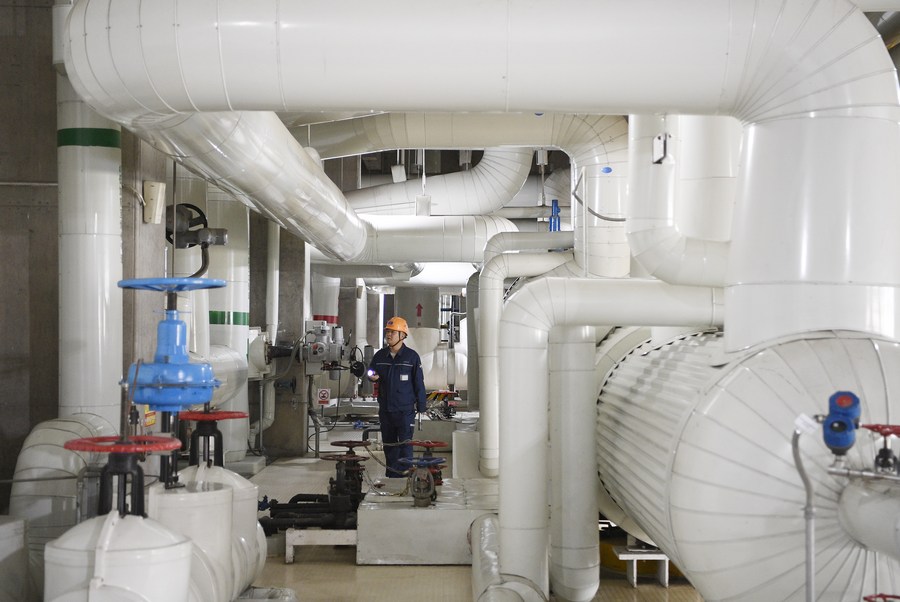
A worker of Xixia thermoelectric company checks heating equipment in Yinchuan, northwest China's Ningxia Hui Autonomous Region, Oct. 11, 2021. The company started heating equipment maintenance work for the upcoming heating season. (Xinhua/Wang Peng)
HARBIN, Nov. 1 (Xinhua) -- Winter in north China used to herald smoggy skies and suffocating air quality due to the extensive burning of coal for heating. Nowadays, with the widespread adoption of renewable energy, the situation has changed drastically.
Centralized winter heating has kicked in ahead of schedule in many northern regions in response to continued low temperatures. On Monday, Tianjin Municipality and Hebei Province started off winter heating. Beijing began debugging the city's heating system in late October and will officially start heating service according to weather conditions.
"The heating system in our residential quarter makes use of heat from wastewater instead of burning coal," said Li Shifu, a resident of Harbin, capital of northeast China's Heilongjiang Province.
The sewage heating system has been developed by KINT, a Harbin-based clean energy enterprise. It has provided sewage heating for more than 80 million square meters of building space in dozens of Chinese cities. Compared with coal-powered heating, the system reduces the emission of pollutants such as carbon dioxide and sulfur dioxide by more than 4.7 million tonnes every year.
"We extract and utilize heat energy from the waste. There is no foul smell in radiators," said Li Jinfeng, who works at KINT.
Clean and renewable energy is part of China's efforts in striving toward a low carbon economy.
China will make further efforts to promote clean heating and ensure that clean energy is used for heating in more than 70 percent of the households in northern China. The use of clean heating in the southern part of the country will also be explored, stated a guideline issued by the National Energy Administration in April.
Data from the China Association of Building Energy Efficiency showed that by the end of 2020, there were 8,200 enterprises engaged in businesses related to clean heating in China, with a total output value of 900 billion yuan (about 140 billion U.S. dollars) and more than 1.19 million employees.
In Huaibei, a major coal-producing base in east China's Anhui Province, ground source heat pumps, which extract heat from the ground, are being used to substitute coal-powered electricity.
In a residential quarter alone, such pumps are expected to help reduce carbon dioxide emissions by 32,000 tonnes, sulfur dioxide emissions by 217 tonnes, nitrogen oxides emissions by 205 tonnes and soot emissions by 127 tonnes every year.
Hongtong Heating is responsible for offering heating services to more than 100 residential quarters in Harbin. On Oct. 26, the company's second phase of biomass power generation project began operations, which is expected to make use of about 600,000 tonnes of agricultural and forestry waste every year.
"The price of biomass fuel is about 300 yuan per tonne, less than one-third of the current coal price," said Li Jianwei with the company. Enditem




 A single purchase
A single purchase









